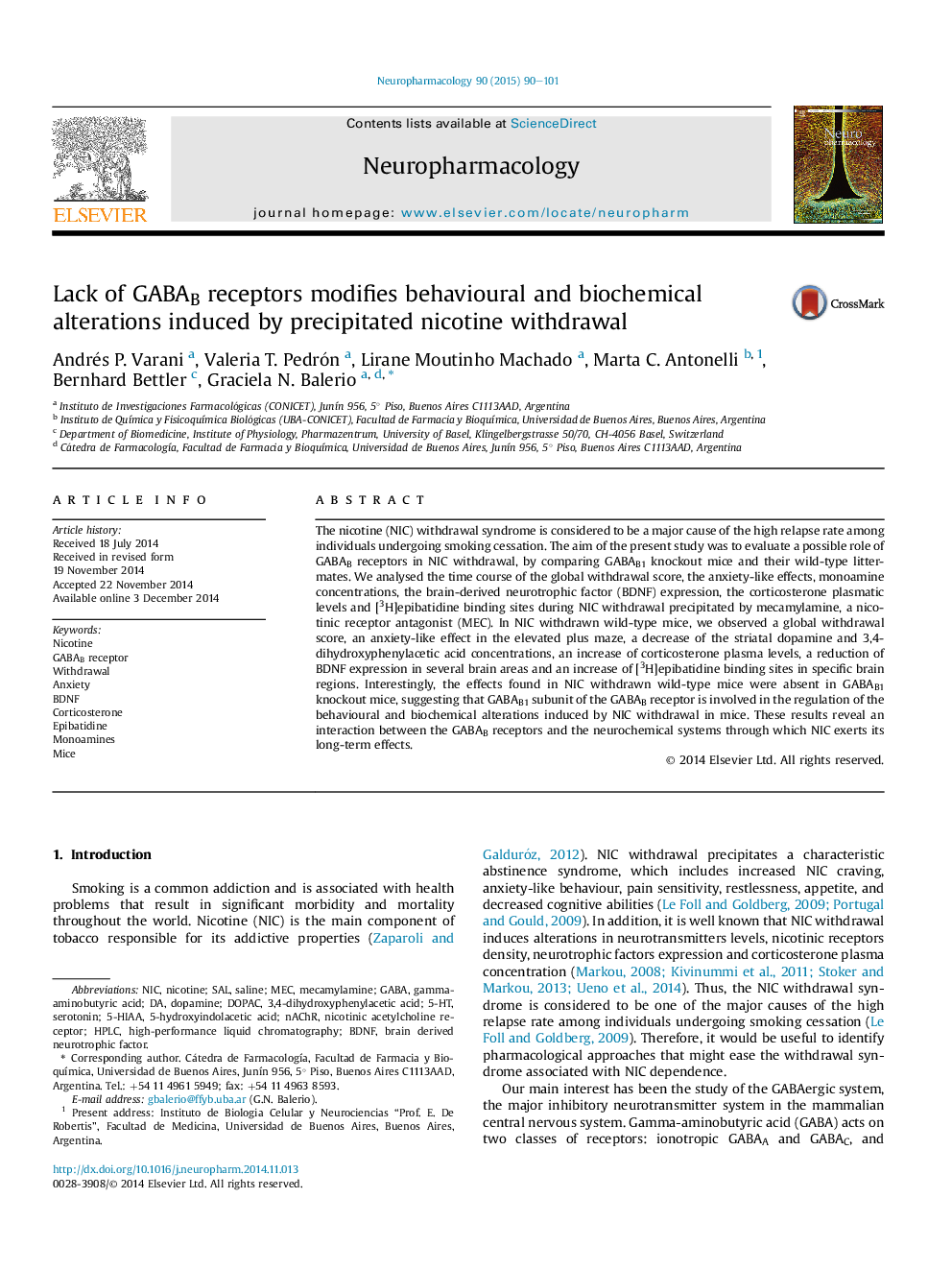| Article ID | Journal | Published Year | Pages | File Type |
|---|---|---|---|---|
| 5814112 | Neuropharmacology | 2015 | 12 Pages |
â¢Somatic signs increase during NIC withdrawal in WT but not in GABAB1 KO mice.â¢Anxiety-like effect increase during NIC withdrawal in WT but not in GABAB1 KO mice.â¢Corticosterone level increase during NIC withdrawal in WT but not in GABAB1 KO mice.â¢BDNF expression decrease during NIC withdrawal in WT but not in GABAB1 KO mice.â¢Nicotinic receptors increase during NIC withdrawal in WT but not in GABAB1 KO mice.
The nicotine (NIC) withdrawal syndrome is considered to be a major cause of the high relapse rate among individuals undergoing smoking cessation. The aim of the present study was to evaluate a possible role of GABAB receptors in NIC withdrawal, by comparing GABAB1 knockout mice and their wild-type littermates. We analysed the time course of the global withdrawal score, the anxiety-like effects, monoamine concentrations, the brain-derived neurotrophic factor (BDNF) expression, the corticosterone plasmatic levels and [3H]epibatidine binding sites during NIC withdrawal precipitated by mecamylamine, a nicotinic receptor antagonist (MEC). In NIC withdrawn wild-type mice, we observed a global withdrawal score, an anxiety-like effect in the elevated plus maze, a decrease of the striatal dopamine and 3,4-dihydroxyphenylacetic acid concentrations, an increase of corticosterone plasma levels, a reduction of BDNF expression in several brain areas and an increase of [3H]epibatidine binding sites in specific brain regions. Interestingly, the effects found in NIC withdrawn wild-type mice were absent in GABAB1 knockout mice, suggesting that GABAB1 subunit of the GABAB receptor is involved in the regulation of the behavioural and biochemical alterations induced by NIC withdrawal in mice. These results reveal an interaction between the GABAB receptors and the neurochemical systems through which NIC exerts its long-term effects.
